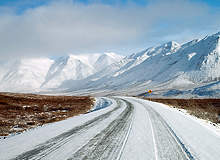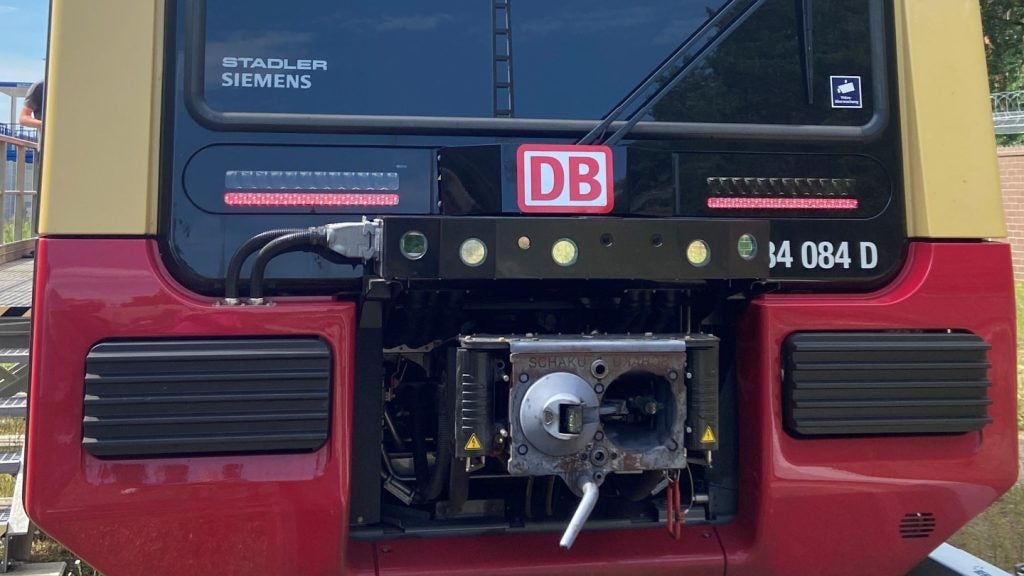
A research project into effective railway construction materials for the arctic conditions of the Alaska Canada Rail Link (ACRL) by Michigan Tech has demonstrated how fundamental university research is to the development of US and global railway infrastructure.
The idea of implementing an Alaska Canada rail link has been under consideration since the Alaska railroad started in 1914. As the value of mineral resources in the region increased, it became apparent that a rail link connecting Alaska and Yukon with the North American railroad would substantially increase economic productivity (and security), development and sustainability in this region.
The 2007 feasibility study showed the overall investment cost to be about US$10.5bn, but also that US$7.8bn in revenues and US$11.4bn in public benefits could potentially occur over a 50-year project life cycle. With its advantages proven, the next essential stage of this 1,900km project needed to find the most effective construction materials for a railroad in such a cold climate. Heavy seasonal frost and permafrost means that different standards for the design, construction, maintenance and operation of rail infrastructure are essential.
Michigan’s research is due for completion this month (June 2010), meaning that projects to extract iron ore and coal mining in this region could be possible in the future with the rail capacity provided by the ACRL. Smaller projects (such as mid-size base metal mines) could also exist without the threat of high-cost trucking, and remote resource exploration and development could be possible through low-cost rail access. With almost US$12bn in public benefits estimated over a 50-year period as a result of the railroad’s implementation, Michigan Tech’s cold climate research is proving to be crucial to the economic future of the region.
Michigan Tech’s Dr. Pasi Lautala is the driving force behind this Alaska State-funded project. Here, he talks of the benefits the research will bring.
Frances Penwill-Cook: What was Michigan Tech’s role in this stage of the ACRL research?
How well do you really know your competitors?
Access the most comprehensive Company Profiles on the market, powered by GlobalData. Save hours of research. Gain competitive edge.

Thank you!
Your download email will arrive shortly
Not ready to buy yet? Download a free sample
We are confident about the unique quality of our Company Profiles. However, we want you to make the most beneficial decision for your business, so we offer a free sample that you can download by submitting the below form
By GlobalDataPasi Lautala: We were the main institute conducting this specific project. Our objective is to investigate relevant literature and experiences of existing and planned rail systems in deep seasonal and permafrost areas around the world. The findings will be used to develop recommendations for future investigations and project development of the ACRL.
The three main research activities include: an extensive literature review focusing on rail transportation issues in cold climates; scan tours of cold climate railroads worldwide to review the current and historical design, construction and maintenance standards of rail infrastructure; and investigation of the current design practices, implementation, durability and performance of pre-stressed concrete with a specific focus on the impact of arctic conditions.
FPC: With information so easily communicated globally, why is there a need for such a major project in this field?
PL: A limited number of cold climate railroads have been constructed over the past several decades and while challenges for cold climate railroading are similar worldwide, information sharing across national borders tends to be somewhat limited. This project attempts to initiate a collection of both industry and academic knowledge, so experiences can be utilised to the benefit of the whole industry, regardless of national borders.
It is important that all potential challenges are considered and addressed at early stages of planning. This project attempts to collect knowledge and experiences worldwide so they can be used to improve the planning process of ACRL during the later phases of the project.
FPC: Part of the research involved travelling to China and Russia to understand the materials and technology implemented in freezing conditions. Why was this?
PL: We spent about a week at each location and found out very interesting applications, but this could be expanded even further, as both of those countries have some of the most extensive research body of cold climate railroads; Russia’s research has longer history, but China has some very recent results (along the Tibet line).
FPC: Can you share some examples of your discoveries and effective technologies?
PL: We recognised that most challenges at cold climate railroads are related to substructure and geotechnical issues. China has some of the most recent examples of technologies used to reduce the thawing of permafrost under the tracks. They utilised various different methods along the Tibet line, such as thermosyphons, ventiduct embankments and crushed rock revetments. At some locations they even combined multiple methods. However, their effectiveness remains to be seen, as they have only been in use for a few years.
Russia had some very interesting low-cost solutions for similar purposes, such as using frozen clay in the embankment construction. Scandinavia, on the other hand, has lots of good applications of methods to reduce the effects of frost-heave on railroads. The approach taken in North America is often to concentrate on good annual maintenance instead of using extensive engineered solutions early in the project.
FPC: What impact will this report have on the ACRL project as a whole and has there been any feedback so far?
PL: It helps engineers on the next project phases to identify topics and issues that can be expected to cause the most challenges. It also provides them with sources for latest information and for lessons learned around the world. We have given several interim presentations and they have caused quite a lot of interest.







